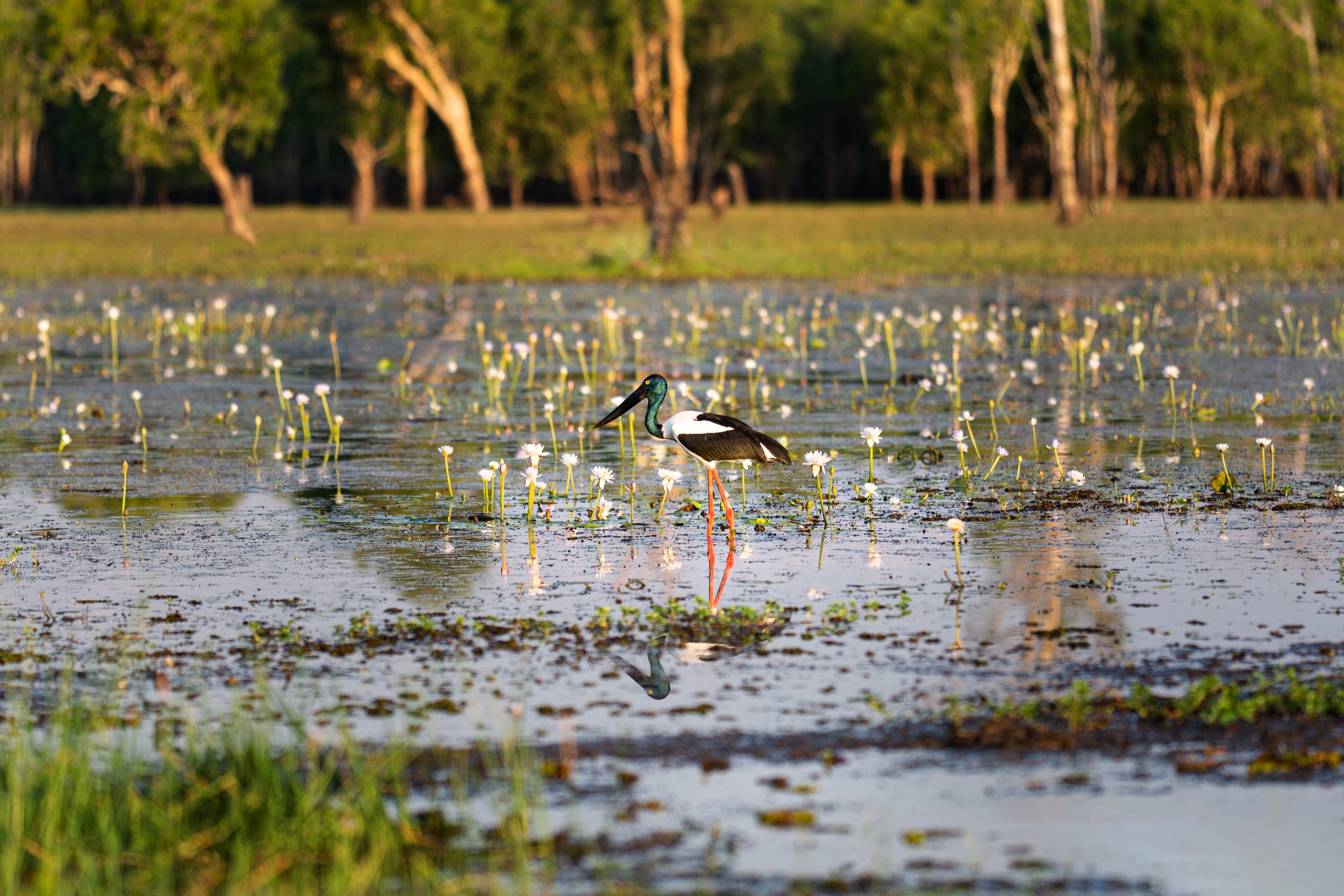News
What to expect from Ramsar COP15

Story | Jul 2025
The 15th Conference of the Parties to the Ramsar Convention on Wetlands takes place from 23-31 July 2025, in Victoria Falls, Zimbabwe. Members of the UNEP-WCMC delegation, Lewis Kramer and Arnout van Soesbergen, talk through what to expect from the event, and the relevance of our work in this area.
Wetlands are the lifeblood of the planet. They provide fresh water and livelihoods, protect communities from natural disasters, and serve as essential carbon sinks that mitigate the impacts of climate change.
Yet around the world, wetlands are in decline – becoming polluted, shrinking in size through human activity, including climate change, and being impacted by natural changes in hydrological cycles. Over a third of the global wetland area has been lost since 1970 and wetlands are disappearing three times faster than forests. This makes wetlands the world’s most threatened ecosystem, according to research by the Ramsar Convention on Wetlands. The recently published Global Wetland Outlook 2025 states that over a fifth of the world’s wetlands are in a poor state and are deteriorating.
What is the Ramsar Convention?
The Convention was established in 1971 in the city of Ramsar, Iran. It works towards the conservation and ‘wise use’ of wetlands across the globe, through local and international action, and holds a COP every three years. This week, delegates are gathering in Victoria Falls, Zimbabwe, for COP15 of the Convention, which carries the theme of ‘Protecting wetlands for our common future’.
A key focus of the Convention is the List of Wetlands of International Importance, or ‘Ramsar List’. This list represents one of the largest global networks of protected areas, and includes more than 2,500 sites across 172 countries, covering an area of more than 2.5 million square kilometres.
There is a huge variety of sites on the list – from the vast Rio Negro in Brazil (an area of 120,000 square kilometres), to the 20-hectare Renuka Wetland in India’s Himachal Pradesh region. They encompass all kinds of habitats, including rivers, lakes, marshes, mangroves and coral reefs, but they share important criteria: they either contain representative, rare or unique wetland types, or they support particularly important species.
How is UNEP-WCMC involved with the Convention?
UNEP-WCMC is an observer organization to the Convention and supports the Convention’s Scientific and Technical Review Panel which, in collaboration with Parties, sets the research agenda for the Convention. This ensures that the work of the Convention remains aligned with its core aims and the regional priorities of the Parties.
The Centre’s work is highly relevant to issues that will be discussed at the COP. For example:
- Data and reporting: The Protected Planet Initiative, managed by UNEP-WCMC, works closely with the Secretariat of the Convention on Wetlands and Parties to the Convention to ensure that Ramsar Site data are reported accurately to the World Database on Protected Areas (WDPA) and World Database on Other Effective Area-Based Conservation Measures (WD-OECM). Capturing these data is essential for measuring global progress towards Target 3 of the Kunming-Montreal Global Biodiversity Framework.
- Conservation and restoration: UNEP-WCMC is engaged in a number of projects supporting the conservation and restoration of vulnerable freshwater ecosystems and their functions and services, such as the CongoPeat initiative, which seeks to protect the world’s largest tropical peatland.
- Ecological connectivity: We are part of the Global Swimways initiative, which aims to balance conservation and sustainable development by mapping the routes used by migrating freshwater fish and assessing the impact of human activities on these routes.
- Championing traditional knowledge: We support Indigenous Peoples and local communities in capturing their efforts as the stewards of wetland areas through the global ICCA Registry, in order to ensure their essential knowledge is documented and recognised at the international level.
- Supporting synergies: As wetlands are vital for biodiversity, climate regulation and sustainable development, it is important to coordinate action across these areas. Our policy team works with many convention secretariats (for example, the Convention on Migratory Species and the Convention on Biological Diversity) to identify and develop links between the different multilateral environmental agreements.
What will be our role at COP15?
As UNEP-WCMC delegates, we will be on the ground at COP15 to support the discussions taking place and provide technical support and policy guidance.
In addition to providing technical support for discussions, we will also be involved in side events during the COP. We will be sharing updates on the updated Online Reporting System (ORS), a sophisticated online application which we developed to help streamline the environmental reporting process. We will also be presenting on protected and conserved area management effectiveness, available data and tools for assessing effectiveness, and the Global Database on Protected Area Management Effectiveness (GD-PAME).
We look forward to meeting with our partners and engaging with new audiences at the COP. We also hope to see further commitments and cooperation on the conservation and wise use of all wetlands on a global scale, and UNEP-WCMC will be supporting these discussions wherever possible.
Main image: Black-necked stork, Kakadu National Park, Australia. Photo: Adobe Stock.
Have a query?
Contact us
communications@unep-wcmc.org
